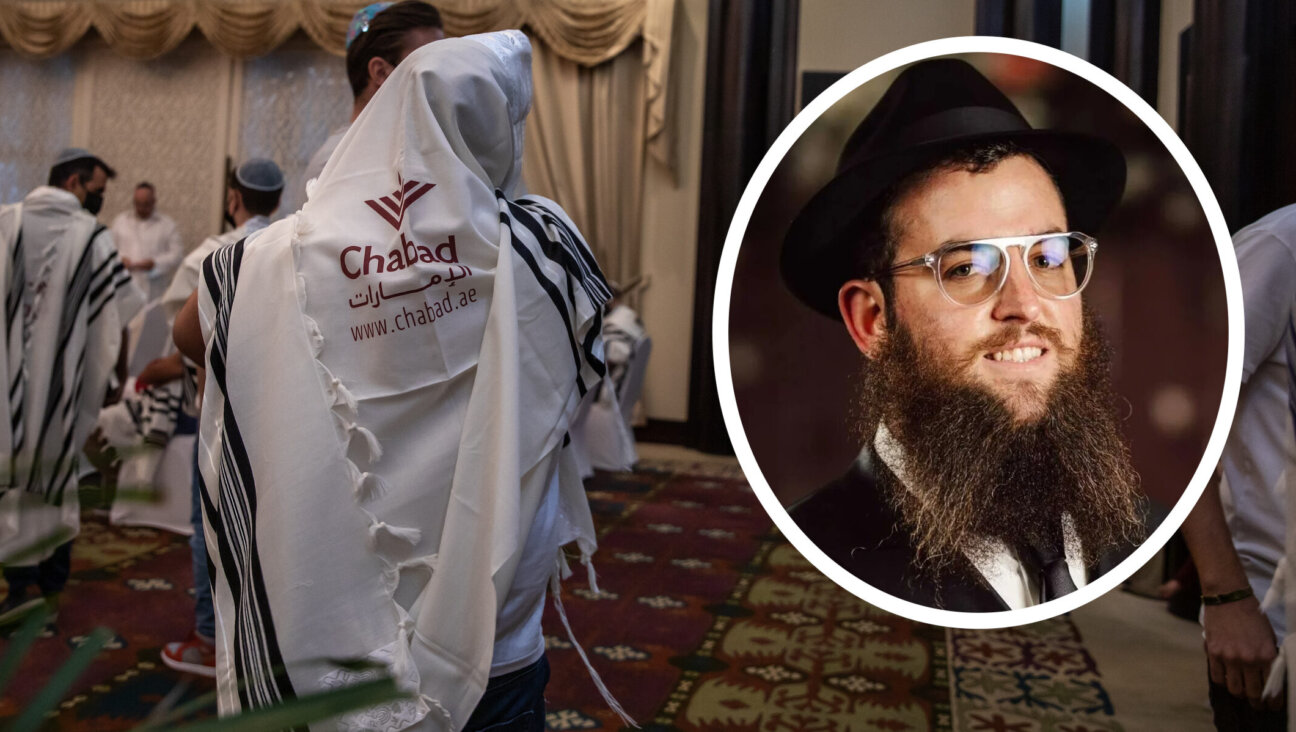Rare Connector: Bringing Bloom’s Sufferers Together

Reaching Out: Sheryl Grossman has fostered connections among Bloom?s syndrome sufferers. Image by JENNIFER SILVERBERG
For a long time, Sheryl Grossman felt like she was alone in the world. Growing up in Flossmoor, Ill., she didn’t understand why she was so small, and why she had to see so many doctors. At the age of 14, her parents told her that she had Bloom’s syndrome, a rare autosomal recessive genetic disorder that affects cells’ normal process of DNA repair, resulting in small body size and a high vulnerability to diseases such as cancer, diabetes and immune disorders.
“I was a typical teenager, rebellious, rambunctious, and that didn’t help matters,” she said. “I think 14 is a hard age for anyone to get that sort of life-altering news.”
Grossman, 34, is still only 4-feet, 3-inches tall, and weighs around 45 pounds. In the last two years she has seen no fewer than 72 different health care providers. But despite the challenges that she faces, Grossman, a social worker who specializes in disability rights issues, has made it her mission to provide support for people with Bloom’s syndrome, and to help them support each other.
In 1996 Grossman started Bloom’s Connect, currently a program of the Jewish Family & Children’s Service of St. Louis. Through its website, Facebook page and online chat room, Bloom’s Connect helps put Bloomies (as people with Bloom’s syndrome call themselves) in touch with one another, both virtually and in person. Today, around 85 families participate in Bloom’s Connect.
According to the Bloom’s Syndrome Registry at Weill Cornell Medical College, only 265 people have ever been diagnosed with the syndrome, 150 of whom are currently living. Although there are some Bloomies who are not in the registry, including members of Bloom’s Connect, the disease is so rare that most people suffering from Bloom’s syndrome have never met another Bloomie.
For Grossman, it wasn’t until she was studying at Washington University in St. Louis that she first met another person with Bloom’s syndrome. A local rabbi had a relative, Alex Turtletaub, who also had Bloom’s syndrome. When the rabbi learned that Grossman and Turtletaub shared the same condition, he arranged for them to meet over a Thanksgiving weekend Shabbat in Chicago.
“We just stared at each other for a little while,” Grossman recalled. “I think it was a really unbelievable experience for both of us — I don’t know if there’s another experience to liken it to. We had something that we could share, we were closer to each other than we were to even our families. It was a peer support that we hadn’t had before.”
“Other people could be angry for us, they could be sad for us, they could sympathize, but they couldn’t empathize,” she added. “They couldn’t be in our shoes, they couldn’t change our lives for us, but the two of us together could. It became our mission to really try to seek out and find others so that we could pool our knowledge, pool our resources, support each other. And that’s how Bloom’s Connect was born.”
At the beginning, Bloom’s Connect was little more than a correspondence between Grossman and Turtletaub and their families, in which they compared notes on their daily medical and social challenges. Turtletaub passed away in 2003, but the work he and Grossman started goes on.
After Grossman began graduate school, also at Washington University, and gained regular access to a computer, she set up an e-mail listserv to reach out to fellow Bloomies, which eventually spread to the variety of platforms that Bloom’s Connect uses today. In May 2008, Grossman organized the very first convention of fellow Bloomies, bringing together 35 people, including six Bloomies, in Chicago. For most of them, it was the first time they had ever met another Bloomie face-to-face.
In addition to providing emotional and social support, Bloom’s Connect enables Bloomies and their families to share vital medical information. When one Bloomie suffers a new complication, he or she can turn to the other members of the group to see if anyone else has experienced the same thing.
“Because it’s so rare and they don’t know a lot about it, we are still discovering things that are inherent to the syndrome or those who carry the gene,” said Natalie Rogers, a member of Bloom’s Connect living in Draper, Utah, whose 18-year-old son Zachary has Bloom’s syndrome. “So we’re able to find out more things in common and help not only the patients, but also their doctors.”
Sharing information about non-medical issues can be equally important. Because of Bloomies’ small stature, everyday activities from buying clothes to driving a car can be trying experiences. For a parent like Rogers, being able to ask an adult Bloomie like Grossman for advice is invaluable.
Currently, Grossman is raising money to put together another Bloom’s Connect conference and is working on a number of smaller projects, including informational brochures for medical providers and the families of children diagnosed with Bloom’s syndrome.
How long she has to achieve her goals, however, is uncertain. Bloomies generally die young — Turtletraub was only 30, and most people with Bloom’s syndrome don’t live past 50. Grossman herself was diagnosed with two new cancers in the past two years. But that only encourages her to achieve as much as possible in the time she has left.
“I owe it to these other families, and to people who don’t yet know,” she said. “And if I waste that time, that 8-year-old boy or that 5-year-old girl may not have the information to alter her life significantly. Knowledge is power, and I have it, and it’s my responsibility as a Jew and as a person to use it responsibly.”
A message from our CEO & publisher Rachel Fishman Feddersen

I hope you appreciated this article. Before you go, I’d like to ask you to please support the Forward’s award-winning, nonprofit journalism during this critical time.
We’ve set a goal to raise $260,000 by December 31. That’s an ambitious goal, but one that will give us the resources we need to invest in the high quality news, opinion, analysis and cultural coverage that isn’t available anywhere else.
If you feel inspired to make an impact, now is the time to give something back. Join us as a member at your most generous level.
— Rachel Fishman Feddersen, Publisher and CEO
























